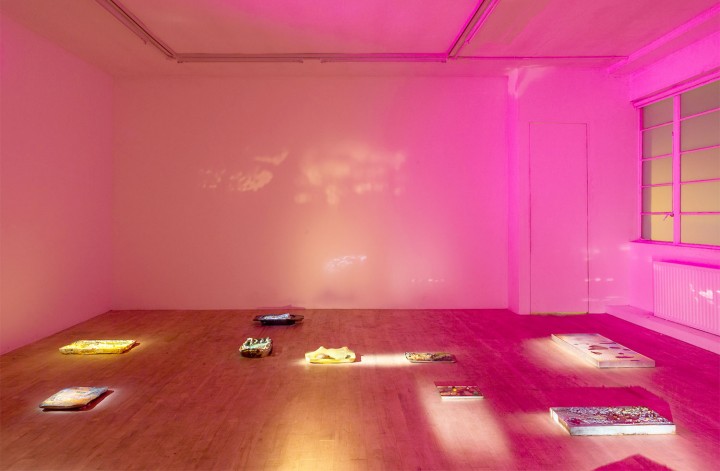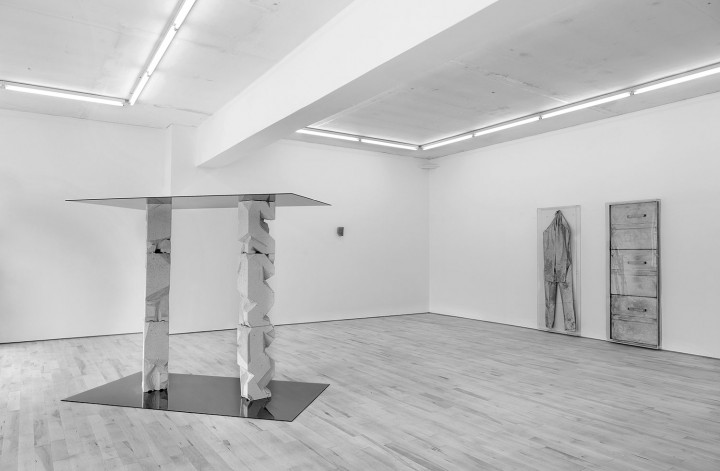Harry Beer, Tom Cole and Will Jarvis talk about the past, present and future of The Sunday Painter, among London’s most lively emerging galleries.
Why did you open The Sunday Painter? Has the purpose changed over the years?
Initially it was conceived as an artists-run space whilst we were still studying fine art at the Chelsea College of Arts and the Camberwell College of Arts. We were located in a disused function room of a pub we converted. It started off with very little direction other than to try and put on good exhibitions with our peers and to allow a space for practical discourse and experimentation. I’d say this general ethos remains true; however there was a time when we realized the gallery could only continue in a meaningful way if we changed the model to a commercial one.
You named the gallery after a nickname that was given to you at school. Do you actually think you are better at finding artists than being artists?
Seeing as we are no longer practicing artists ourselves, I hope so! The transition from being an artist-run space to a gallery happened fairly naturally through being both a necessity and a conscious decision. We were also at art school with fellow students/friends who are now beginning to establish successful careers, so a lot of the relationships we have with artists are pre-existing. We’ve known them from the very beginnings of their careers, and this can be a valuable insight when it comes to finding and working with artists.
Does your background affect your program decisions?
I think having come from artistic backgrounds means we share some important sensibilities with the artists we work with, and the pace at which we do things and grow is in keeping with coming from this background. Beyond that, our own history does not influence the program too heavily — the desire to have a program that constantly challenges and questions is a stronger influence.
Can you describe the community around The Sunday Painter?
Our community is fairly broad. We’re lucky to have a good following and network of great people from our immediate community in Peckham. Because of our own beginnings, this is often in the form of artists we studied and grew up with, but the changing nature of the business, through our development to a commercial gallery, means that this now extends to collectors, patron groups, writers, curators, etc. Beyond our local community we are beginning to develop a more international outreach through participating in fairs, constantly developing relationships with fellow galleries, collectors and curators.
Who are your strongest supporters?
Artists, both those we have worked with from the early days and those who are relatively new to the gallery, have been and continue to be key supporters as the gallery constantly evolves. Their belief in us, and vice versa, is fundamental to what we are trying to achieve. We also have had great support from other more established galleries who have helped us over the years by giving us good advice on the strange business we work in. This has been invaluable I think. As well as this, we have a number of individuals who have been really key in our progression.
Are you very close to the artists you work with? Can that be a double-edged sword or does it usually work out well?
I think it is fair to say that there are some artists who we work with that we are very close to, and so far it seems to be working out well! The artist-gallery relationship requires openness, honesty and communication, so being close to the artists is important in this respect.
The gallery has been commercial for a couple of years. Are you already able to financially sustain your program?
Yes we are (just!).
Well Done! Did taking part in art fairs help finance the gallery?
Yes and no! Art fairs can be quite contradictory — they are a fundamental part of the art world and can be crucial in terms of sales, exposure and introducing artists to a new audience. They can often be the place at which a large portion of the year’s sales are made. At the same time, they come with very high overheads — the margins can be tight, particularly for a young gallery like ourselves.
Can you share a glimpse of your future program?
We have finished a major renovation of the gallery and are looking forward to working on some exciting shows in the new space, including solo shows with Hannah Lees and Neil Rumming, and a group show curated by Elinor Morgan, who is the new senior curator at Middlesbrough Institute of Modern Art. We have also just been joined by Tom Cole, who has come on board as a new partner.



